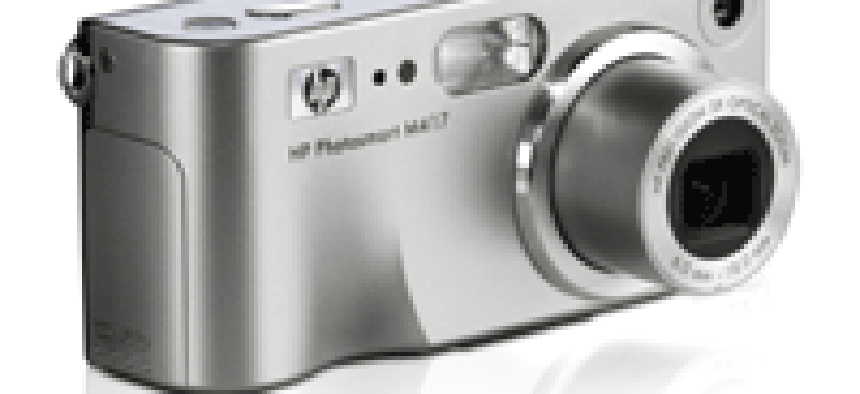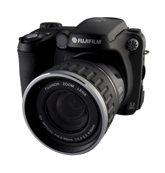A downward movement of sophisticated features from more expensive digital cameras to lower-priced models continues apace, industry experts agree, and that means buyers are getting more, well, flash for their cash.Not to mention more megapixels, more zoom and bigger LCD displays on the backs of cameras, and greater durability for on-the-job photography.When you can get a camera with 7.2 or 8 megapixels for a list price of less than $400'retailers often discount those prices further'then perhaps the revolution has, indeed, arrived.Megapixels, a measure of the resolution a camera's images provide, aren't the only factor in digital photography, but buyers often reason that the more megapixels, the better.Not only does just about every one of the cameras in GCN's guide to inexpensive models list for $400 or less (one sells for $499), but all offer five megapixels or higher resolution, a level not seen at this price point two or three years ago.'Five years ago we were talking about $500 cameras that had one megapixel,' said Phil Scott, a general manager for Eastman Kodak Co., who specializes in digital cameras and is based in Atlanta. 'The cameras have come a long way.'Indeed they have. According to Andrew LaGuardia, senior manager of corporate communications for Fuji Photo Film USA Inc. of Valhalla, N.Y., the replication of high-end features for low-priced cameras hits just about every area that might appeal to users.'For buyers to get a full-featured digital camera, they don't need to spend the kind of money they did two years ago. In this category of cameras, you're seeing other features,' LaGuardia said. 'For example, speed has always been a big concern for users of digital cameras. New technologies, such as our RealPhoto, quickening the speed of operation, turns [the camera] on in about a second.'He also noted that shutter lag is now down to 1/100 of a second and battery life is up to 500 pictures on a single charge.In addition, the variety of camera styles has widened, he said. 'Not only can you find point-and-shoot models for under $400, but cameras with SLR styling, features such as 10X optical zoom, dual media slots, manual features and controls [are available] for that price, too,' he said.[IMGCAP(2)]You can get inexpensive cameras with varied features in a number of styles, but the majority of models in our survey are pocket-sized. They're easy to carry, of course, and can withstand more punishment than earlier versions.'Durability is something that people are increasingly sensitive to,' said David Jackson, Hewlett-Packard Co.'s worldwide marketing director for digital cameras. 'HP and other vendors are investing time and energy to make sure a camera can withstand the day-to-day knocks.'Ryan said makers are turning to metal cases so that people can use them in a variety of environments without worrying about the cameras breaking or failing.Fuji's LaGuardia added that consumers expect more of their cameras. 'The buyers now are different. They're becoming a little more savvy,' he said. 'Whereas megapixels were a big determinant as well as price, now that they're veteran digital camera users ... people are becoming used to and framing pictures with LCD displays, so LCD technology is becoming more advanced.'And Kodak's Scott says people are looking for more than just megapixels.'Will the megapixels continue to go up and push into lower price points? Of course they will,' he said. 'The truth is, more is better only when combined with the right other things to take advantage of it. That's why we put [lenses from Schneider Optics Inc. of Hauppauge, N.Y.] into many of our cameras; our cameras automatically correct for greenish tone from fluorescent lighting.'[IMGCAP(3)]HP's Ryan agrees: 'In the next year, things that were secondary and tertiary, such as size and quality of [LCD] display, battery life, in-camera features to fix pictures' those will be important in the replacement camera market.'He adds that buyers will also see 'innovative new features more relevant to [the] point-and-shoot photographer, not a pro or hobbyist. There you see things such as elements that fix the photo in the camera, such as red-eye removal, not red-eye reduction. Up until now, that's a feature not present on any camera.'Ryan also cautions buyers to consider total cost of operation, including memory cards, batteries (most cameras on the list use lithium-ion, or Li-On, batteries, although some use AA cells) and other items.Having some internal 'flash' memory, Kodak's Scott said, lets users store a few pictures even when the memory card is full. It's also helpful to be able to organize photos into albums on the camera, making transfer and subsequent organizing easier, he added.Other future features for lower-priced models will be the inclusion of more manual options in point-and-shoot models, as well as those that clean up 'noise' found in pictures, which LaGuardia said was the equivalent of static in a television picture. And wireless communications'WiFi to send pictures'as well as better video recording are also predicted.The bottom line, though, is that users who need a camera now should buy one: Today's models offer plenty of features and capabilities, which federal users can deploy for the next new project, disaster or memorable moment.
The v550 digital camera from Eastman Kodak, shown sitting in its dock, sells for $399 and has a 2.5-inch LCD monitor.
Fuji's FinePix S5200 point-and-shoot camera features 10x optical zoom and is priced at $399.
HP's PhotoSmart M417 camera, priced at $200, boasts 21x total zoom.









